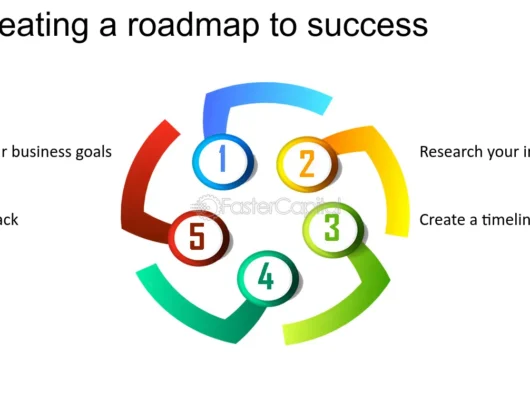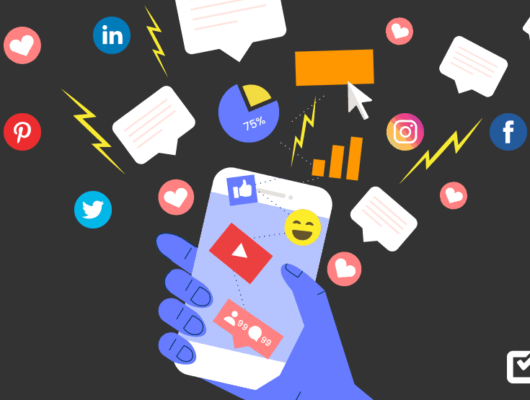Have you ever scrolled through your social media feeds and stumbled upon a post that immediately struck an emotional chord with you?
Whether it’s laughter, awe, anger, or nostalgia – we’ve all experienced the power of emotion in social media. As creators, tapping into our audience’s emotions is critical to creating shareable content that resonates deeply with them. So buckle up and get ready to explore the fascinating world of emotional marketing in this blog post!
What is the Power of Emotion in Social Media Content?
When creating social media content, you must know how to evoke emotion in your audience. Emotion makes people share content; it’s why we forward an email to a friend or share a post on Facebook. We want others to feel what we’re feeling.
The power of emotion in social media content can be used for good or bad. For example, a company might use fear to sell insurance or happiness to sell travel packages. While there are different ways to use emotion, some emotions are more effective than others when getting people to share content.
Some of the most effective emotions to evoke in social media content are:
Joy: People like seeing happy things and sharing them with others. Content that makes people feel good will be shared more often than content that doesn’t.
Anger: Anger is a powerful emotion that can make people take action. If you tap into this emotion, you can get people to share your content to vent their frustration or take a stand on an issue.
Fear: Fear is another powerful emotion that can be used to get people to take action. For example, if you’re trying to raise awareness about a cause, using fear-based messaging can be effective in getting people to share your content.
When using emotion in your social media content, it’s essential to ensure it’s authentic and relevant to your audience. People can tell when a message is fake or forced, so make sure your content is genuine and resonates with them.
Why Emotions are Essential for Creating Shareable Content
When it comes to creating shareable social media content, the power of emotion should not be underestimated. Emotional content is more likely to be shared than purely informative or instructional content.
This is because emotions evoke an immediate response in us that can be contagious. When we see something that stirs up an emotional reaction, we are more likely to share it with others to elicit the same reaction.
Content that makes us feel positive emotions like happiness, love, and admiration is more likely to be shared than content that makes us feel negative emotions like anger, sadness, or fear.
This is because we want to share things that make us feel good, and we want others to experience those same positive emotions. We also tend to avoid sharing things that might make others feel bad.
So if you want your social media content to be shared widely, focus on creating content that elicits positive emotions in your audience. Use images, stories, and humor to connect with your audience emotionally, increasing the chances of your content being shared far and wide.
How to Use Emotions to Create Engaging Content
When creating content that people want to share on social media, one of the most important things to consider is the role of emotions. After all, it’s people’s emotional connection with your content that will inspire them to share it with others.
So how can you use emotions to create more engaging content? Here are a few tips:
1. Play into positive emotions like happiness, love, and excitement.
2. Use images and videos to tell a story and evoke an emotional response.
3. Write headlines that pack an emotional punch.
4. Share personal stories that connect with your audience on an emotional level.
5. Use humor to lighten the mood and make your content more enjoyable.
Examples of Engaging Content That Used Emotion
Regarding social media, content that stirs up positive emotions is more likely to be shared than content that doesn’t. A study by the University of Pennsylvania found that positive emotions like awe, joy, and love are nearly twice as likely to be shared on social media than negative emotions.
So, what does this mean for you and your business? It means that if you want your content to be shared on social media, you must ensure it elicits positive emotions in your readers.
Here are some examples of engaging content that used emotion to significant effect:
1. Awe-inspiring travel photos: There’s nothing like seeing amazing photos of far-flung destinations to ignite a sense of wanderlust in even the most grounded individual. Share photos of your latest travel adventure on social media and watch as your followers start planning their own getaways.
2. Uplifting stories: We all love a good, feel-good story, especially one we can share with friends and family. Share stories of hope, courage, and overcoming adversity on social media, and watch as they inspire others to do the same.
3. Funny videos: Everyone loves a good laugh, so sharing funny videos on social media is a great way to engage followers. Just make sure the videos are appropriate for your brand and audience.
4. behind-the-scenes sneak peeks: Giving your followers a look at how your business works is a great way to generate interest and engagement. Just make sure to keep it lighthearted and fun!
5. Contests or giveaways: Everyone loves a good contest or giveaway, so sharing one on social media is a great way to engage your followers. Plus, it’s an excellent opportunity to learn more about your audience and grow your customer base.
Tips for Crafting Shareable and Emotional Content
We’re all well aware that social media is a powerful communication tool. But what makes social media so effective? One word: emotion.
When something tugs at our heartstrings, we’re more likely to share it with friends and family. Emotional content is so important in creating shareable social media content.
Here are a few tips for crafting shareable and emotional content:
1. Tell a story. Stories are one of the most potent ways to connect with your audience emotionally. When telling a story, evoke some emotion – happiness, sadness, anger, or fear. The more relatable your story is, the more likely it is to be shared.
2. Use images and videos. A picture is worth a thousand words, as they say. And that couldn’t be more true when it comes to social media. People are far more likely to engage with and share visual content than text-based posts. So if you want your content to be shared, make sure to include images and videos.
3. Be personal. When you give your audience a glimpse into your personal life, you connect emotionally with them. Whether you’re sharing a photo of your family or writing about a recent life event, when you open up and share your personal experiences, people are more likely to engage with and share your content.
4. Play on nostalgia. Everyone loves feeling nostalgic, so try to evoke this emotion in your content. Whether through music, photos, or videos, giving your audience a trip down memory lane will make them feel connected to your brand and more likely to share it.
5. Create an emotional call to action. When you ask people to take action on something that resonates with them emotionally, they’re more likely to act on it and share it with their network – whether it’s signing a petition or donating money for a cause they care about.
By tapping into emotions in your content, you can create powerful social media posts that will be shared far and wide. So start crafting emotional content today!
Conclusion
Emotions are powerful tools that can be used to create shareable content on social media. By leveraging the power of emotion, you can tap into your audience’s feelings and help them connect with your message more profoundly.
Whether you want to evoke joy, sadness, curiosity, or inspiration – emotional storytelling is an effective tool for creating meaningful connections between brands and their audiences.
With the right strategies, emotion-driven content can become highly shareable and help increase engagement on social media platforms.






